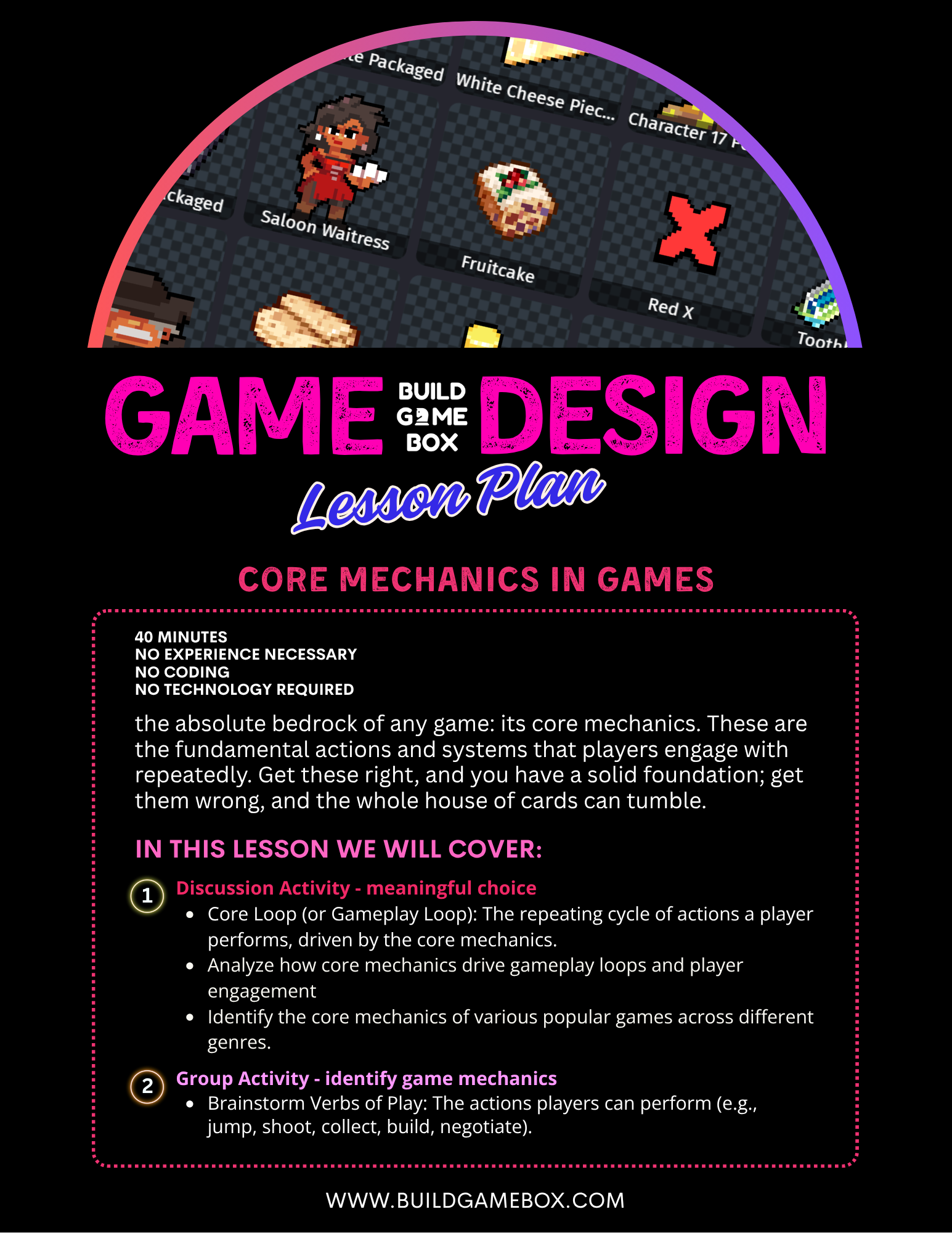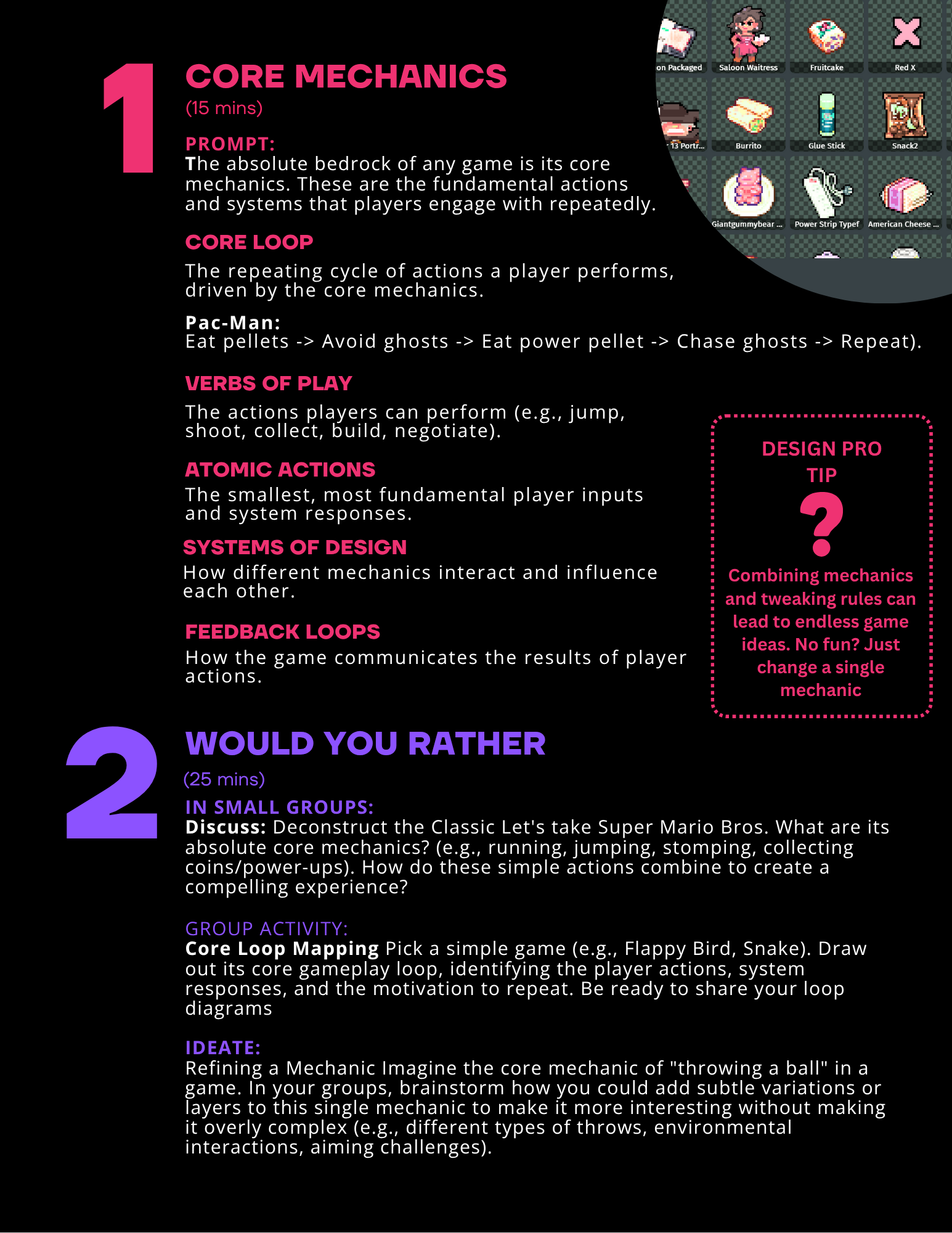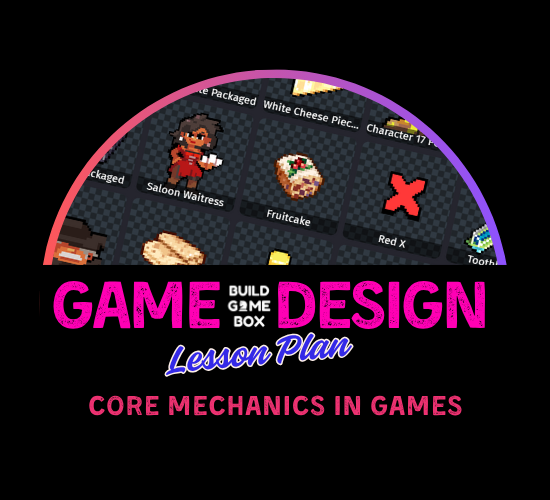

Core Mechanics in Games
The absolute bedrock of any game are its core game mechanics. These are the fundamental actions and systems that players engage with repeatedly. Get these right, and you have a solid foundation; get them wrong, and the whole house of cards can tumble. Today, we're defining, identifying, and appreciating the elegance of core mechanics.
Learning Objectives
By the end of this lesson, you should be able to:
- Define "core mechanics" in game design.
- Distinguish core mechanics from secondary mechanics or features.
- Analyze how core mechanics drive gameplay loops and player engagement.
- Identify the core mechanics of various popular games across different genres.
- Begin to articulate how core mechanics can be refined and iterated upon.
Key Concepts
Core Loop (or Gameplay Loop): The repeating cycle of actions a player performs, driven by the core mechanics. (e.g., Pac-Man: Eat pellets -> Avoid ghosts -> Eat power pellet -> Chase ghosts -> Repeat).
Atomic Actions: The smallest, most fundamental player inputs and system responses.
Verbs of Play: The actions players can perform (e.g., jump, shoot, collect, build, negotiate).
Systems Design: How different mechanics interact and influence each other.
Elegance: When a small set of simple mechanics can lead to deep, emergent gameplay.
Feedback Loops: How the game communicates the results of player actions.
Activities
Discussion Starter: Deconstruct the Classic Let's take Super Mario Bros. What are its absolute core mechanics? (e.g., running, jumping, stomping, collecting coins/power-ups). How do these simple actions combine to create a compelling experience?
Class Activity: Identify the Core I'll name a game (e.g., Tetris, Minecraft, Chess, Candy Crush), and you, as a class, will identify its primary core mechanics. We'll discuss why those are central and what would happen if they were removed.
Group Activity: Core Loop Mapping In small groups, pick a simple game (e.g., Flappy Bird, Snake). Draw out its core gameplay loop, identifying the player actions, system responses, and the motivation to repeat. Be ready to share your loop diagrams.
Design Challenge: Refining a Mechanic Imagine the core mechanic of "throwing a ball" in a game. In your groups, brainstorm how you could add subtle variations or layers to this single mechanic to make it more interesting without making it overly complex (e.g., different types of throws, environmental interactions, aiming challenges).
Homework
Core Mechanic Analysis: Choose a game you love and identify its 2-3 most fundamental core mechanics. Describe each mechanic in detail and explain how they interact to form the game's core loop. Provide specific examples of how these mechanics are used throughout the game. (300-400 words).
Further Reading: Read "Rules of Play" by Katie Salen and Eric Zimmerman (Chapter 10: "Mechanics").
Further Watching: Look up "GDC Microtalks" on core loops or atomic mechanics.
Conclusion: Core mechanics are the heartbeat of your game. They're what players will be doing most of the time, so they need to feel good, be understandable, and offer depth. Don't get lost in features before you've nailed your core. Speaking of nailing things, next time we'll talk about how to generate those brilliant ideas in the first place: brainstorming!
